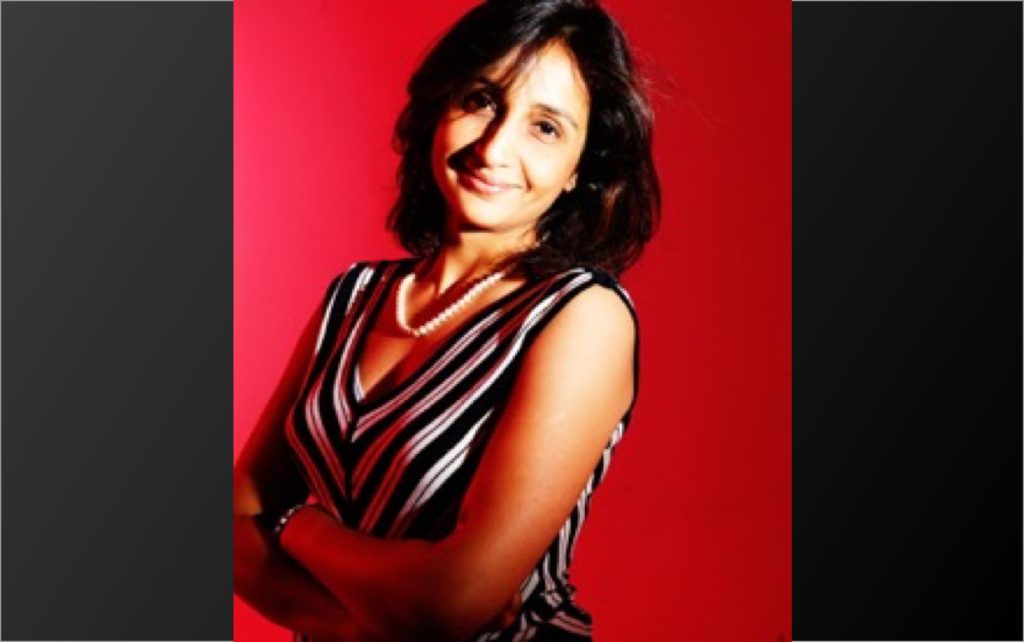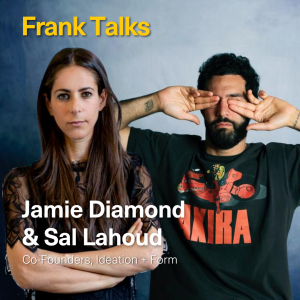For this week’s Frank Talk we sit down with Gayatri Singh, the Curator and Founder of Art Pilgrim Live in New Delhi, India. Gayatri has been involved in art and education for over 20 years, including running an Indian contemporary art gallery in London. As a curator and a design thinker with international experience she hopes to create a new space in art that encourages collaboration, dialogue and learning. The focus is to push creative boundaries.
Previously, Gayatri founded ThinkStations in 2013, an education company that runs programs to build language comprehension, speaking and critical thinking skills. She also co-founded QBS Learning, an education content company based in the UK and the US before ThinkStations.
Gayatri has over 18 years of entrepreneurial, art and education experience. In 2009, she received the Tata Stree Shakti Award for Woman Entrepreneurship. Gayatri has also worked with Arthur Andersen and The Economist Intelligence Unit before starting her journey as an entrepreneur.
She has a background in business, studying Economics at St Stephens followed by a CBA from INSEAD. She is also a member of the core team and treasurer of iamgurgaon (www.iamgurgaon.org) an NGO focused on green projects. We are thrilled to bring you Gayatri’s Frank Talk here, please enjoy reading!
What was your first job in the Arts?
My background was Business and Economics before I started doing short curation courses. Art was a family business and I have always been involved informally. The first thing I did was designed a catalogue for one of our earlier shows.
What was the most useful or important thing you learned at that job?
I learned that design is a powerful tool to capture a person’s interest. If people like what they see visually they are most likely to want to know more. We don’t pay enough attention to how powerful this is.
Tell us a little more about yourself. When did you realize you wanted to pursue a career in this industry?
I started a company which developed curriculum for K-12 for the US and UK. While the focus was on curriculum design and content, visual design played a very important role in education both in the US and UK. I was always attracted to the creative part of everything we did.
I have always wanted to do a lot more in the field of visual arts but did not want to just run a gallery. When I saw my opportunity with Art Pilgrim Live I grabbed it and have not looked back since. We look at getting diverse creative minds together to collaborate and work. We are more than just a traditional art gallery.
What do you do now?
I run two galleries and am the curator of Transitional Spaces, an event that brings people from diverse creative fields under one roof to create, collaborate and share.
Where are you from?
I was born and did my early education in India.
What is the arts community like there?
That is a very difficult question – the community is diverse and people can be very different from each other.
Has where you come from shaped what you do in the arts today?
Yes, the fact that I have done different things – having majored in Economics, worked as a consultant for the first 3 years of my life, and then starting an education business. I started the art business after 10 years in education. I take a little from all of my experiences.
A clear strategy is important, and the need to innovate and reinvent yourself is something I have learned and feel applies to art too – “you snooze you lose!” I think a business must be created with a solid foundation through processes and this applies to an art business too.
What is the best piece of advice you can give about working in the art world?
Don’t stagnate! Change, experiment and reinvent!
What is one of your greatest accomplishments in your career so far?
My greatest accomplishment lies ahead of me. I was happy when I received a Women Entrepreneur Award, but a lot happier when I was able to launch Transitional Spaces.
What has been a challenge for you?
I think the fact that clients in India don’t follow their heart when it comes to art. Most often customers buy works based on names and what friends own. I would love the market to be a lot more intuitive and informed. Art can be such an amazing journey of self-discovery.
What is something you do every day at work?
I try to look at a new work every day!
What defines a good employee? What defines a good boss?
The right attitude, willingness to try new things and reliability in terms of time and process.
I think a good boss is one that empowers and delegates! With more responsibility there is growth.
What do you think makes a person hirable?
In the gallery business I look at enthusiasm, structured approach and a good visual sense. I don’t really worry that much about the education background.
What is your advice to making yourself stand out in your workplace?
I don’t think I am very good at this ?
Are there any tips you can give people entering the workforce?
Follow your heart and not the money. If you love it you will be good at it and the money will then follow!!!
In your experience, what are things to do and things to avoid during an interview?
I think you should recognize your weaknesses, as no one is perfect. Another thing that really gives me warning signs is when employees don’t seem to be flexible. In today’s environment change is the only constant – rigid people who are scared of change will limit their growth and the growth of your business.
Any other anecdotes about your experience in the art world that you would like to share?
What is interesting is how powerful art is as a medium of expression. During a protest, I had a well-known artist create some props that furthered the message – the fresh visual approach had every major newspaper cover it. It captured the attention and made a huge impact. We need to use art more to communicate key messages. Art has the ability to connect at a completely different level, and the visual makes us think about it a lot more!
What is the best exhibition you have seen in the last year?
Transitional Spaces was my best. Transitional Spaces was born with the hope to push the creative world out of their comfort zones while rekindling the spirit of integration and collaboration. Having the passion and the desire to do something different was an important factor which generated the energy we needed to create something special. The enthusiasm that participants from different professions had to collaborate – in a whole new way – architects with artists, landscape designers with sculptors, furniture designers with artists, made the exhibition unique. Going forward it has created new possibilities and perhaps new markets for their artistic expressions.
If you could own a work by 5 different artists, who would be in your collection?
I love sculptures and therefore picking only 5 sculptors! I would love to have as part of my collection – a Himmat Shah, Biman Das, Dhananjay Singh, Arun Pandit and a Vineet Kacker Pillar.




